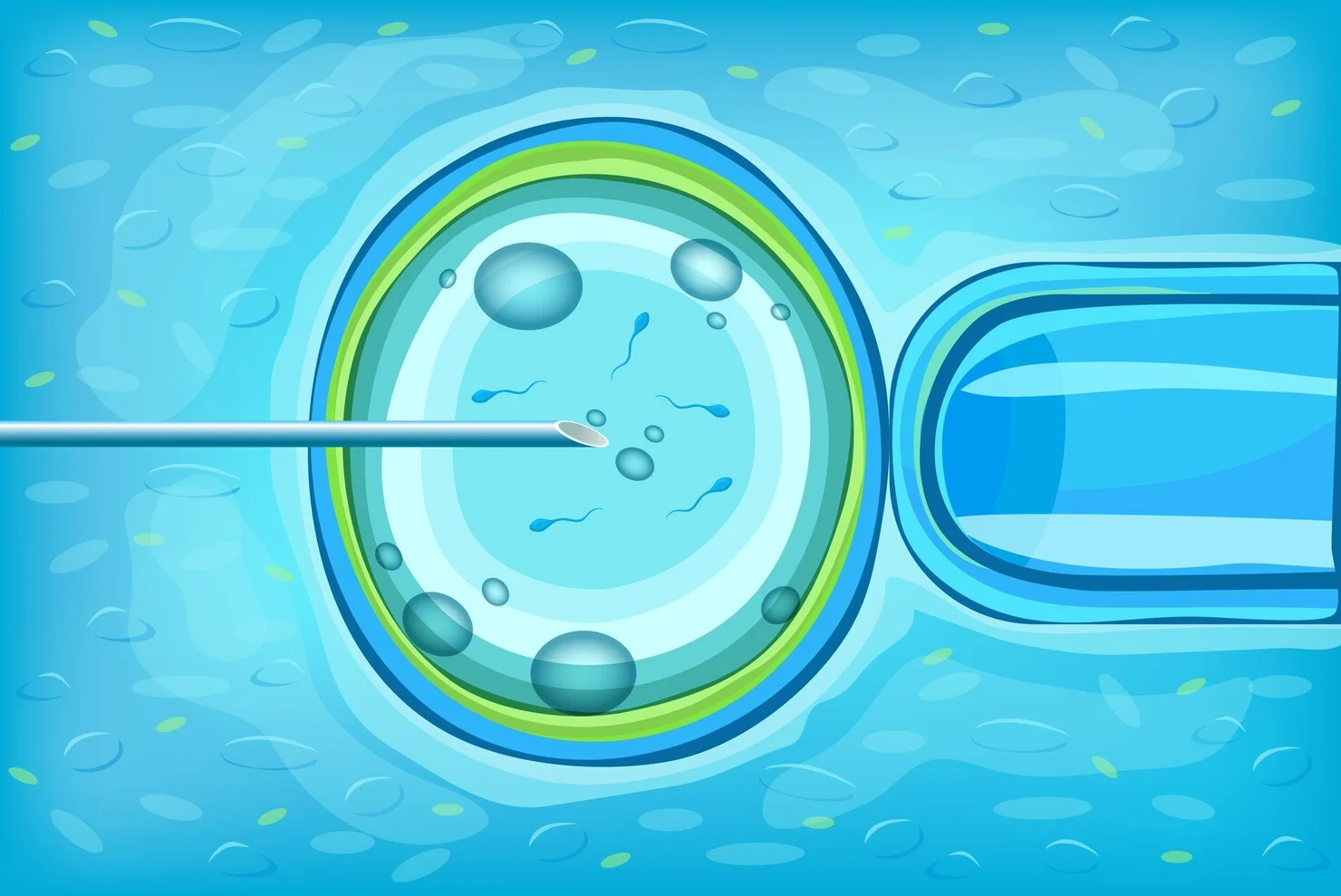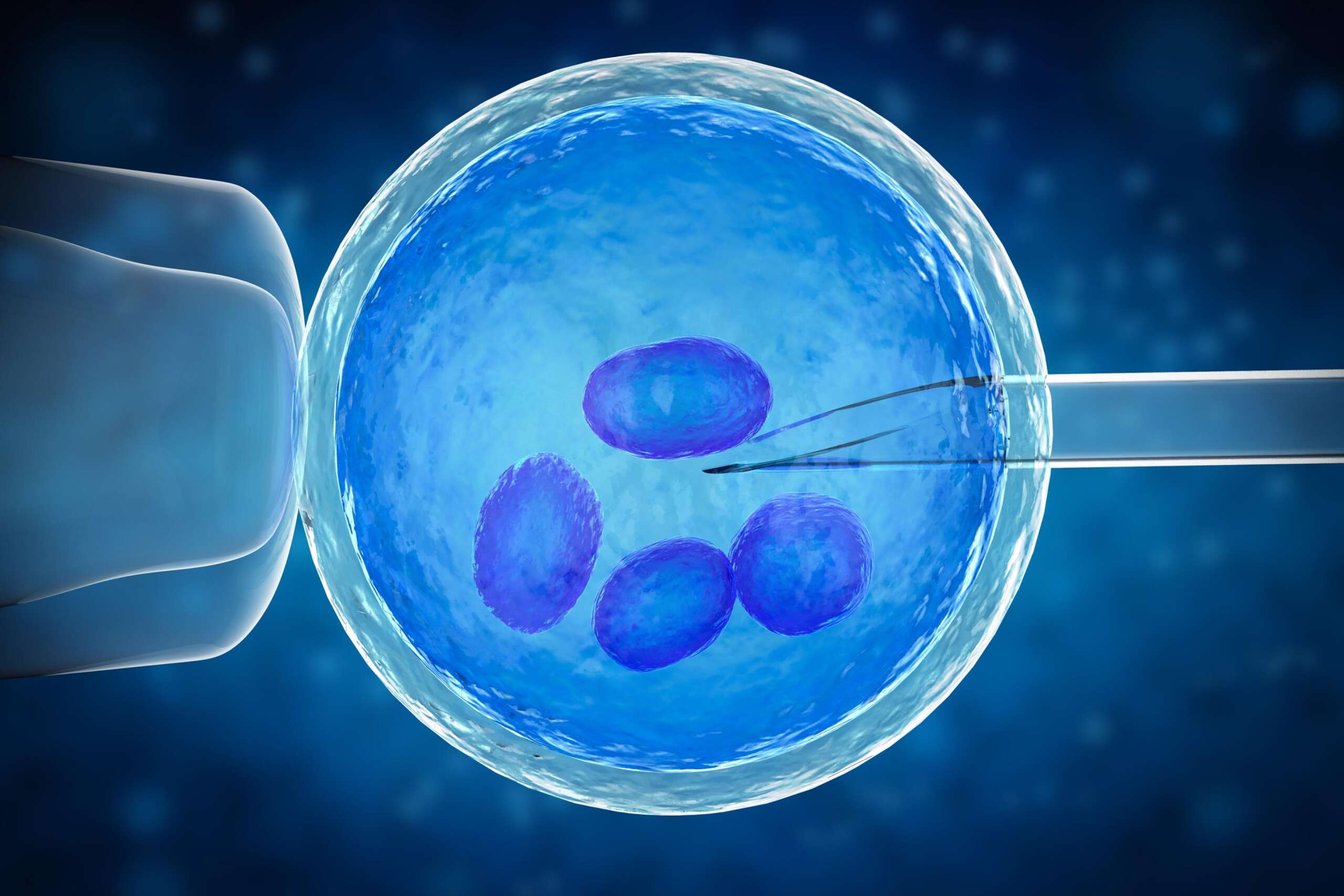
Artificial Insemination vs. IVF: What You Need to Know to Start Your Journey
April 17, 2025
Allie Stuckey and IVF: A Deep Dive into Her Views, Life, and What It Means for You
April 17, 2025The Art and Science of IVF: A Deep Dive into In Vitro Fertilization
In vitro fertilization, or IVF, is a term you might’ve heard tossed around on TV shows or in casual conversations about starting a family. But what exactly is it? At its core, IVF is a blend of cutting-edge science and a deeply personal journey—a process where eggs and sperm meet outside the body to create a tiny spark of life. It’s often described as a miracle for those struggling to have kids, but there’s so much more to it than that. Think of it like an artist painting a masterpiece: it’s precise, emotional, and full of unexpected twists.
This article isn’t just about the basics. We’re going deeper—way deeper—into the world of IVF. We’ll uncover hidden details, explore what people don’t usually talk about (like the quirky hobbies it inspires or the privacy struggles it brings), and answer the questions fans of this topic are dying to know. Whether you’re curious about the process, considering it yourself, or just love a good science-meets-life story, stick around. We’ve got practical tips, fresh research, and some surprises that’ll make you see IVF in a whole new light.
What Is IVF, Really? Breaking It Down
IVF stands for “in vitro fertilization,” which is Latin for “in glass.” That’s right—it’s all about creating life in a lab dish before it’s placed into a womb. Imagine a chef mixing ingredients in a bowl, but instead of a cake, the result could be a baby. Here’s how it works in simple terms:
- Step 1: Boosting Eggs – A person takes special meds to make their ovaries produce more eggs than usual.
- Step 2: Egg Retrieval – Doctors use a tiny needle to collect those eggs while the patient naps under sedation.
- Step 3: Sperm Meets Egg – In a lab, sperm (from a partner or donor) is added to the eggs. Sometimes, a single sperm is injected into an egg (called ICSI—more on that later!).
- Step 4: Embryo Growth – The fertilized eggs grow into embryos over a few days.
- Step 5: Transfer – One or more embryos are placed into the uterus, hoping they’ll stick and grow.
Sounds straightforward, right? But here’s something wild: the first IVF baby, Louise Brown, was born in 1978, and since then, over 8 million babies have come into the world this way. That’s a lot of little miracles!
Why People Turn to IVF
Most folks think IVF is just for infertility, but it’s not that simple. Sure, it helps when someone’s fallopian tubes are blocked or sperm count is low, but it’s also used for:
- Genetic disease prevention (testing embryos before transfer).
- Same-sex couples or single parents using donors or surrogates.
- People freezing embryos for later (like a time capsule for future kids!).
The Emotional Rollercoaster of IVF: What You Don’t Hear Enough
IVF isn’t just needles and lab coats—it’s a wild ride of feelings. One minute you’re hopeful, the next you’re stressed out of your mind. A lot of articles skim over this, but let’s get real: this process can turn your life upside down in ways you might not expect.
Privacy? What Privacy?
When you’re doing IVF, everyone seems to have an opinion. Your mom asks, “When’s the baby coming?” Your coworker spots your hormone injection kit in the office fridge. Suddenly, your personal life feels like a reality show. One study from the Journal of Reproductive Psychology found that 68% of IVF patients felt their privacy took a hit during treatment. It’s not just nosy people—it’s also the constant doctor visits and the pressure to share updates.
“IVF strips away that quiet space where you can just be yourself. You’re exposed, whether you like it or not,” says Dr. Emily Harper, a fertility counselor.
Hobbies Born from IVF Stress
Here’s something cool: IVF sparks some weirdly specific hobbies. People going through it often pick up random pastimes to cope. Think:
- Bullet journaling – Tracking shots, appointments, and moods with colorful pens.
- Gardening – Nurturing plants when you’re waiting to nurture a baby.
- Puzzle-solving – Because putting pieces together feels like control in a chaotic time.
One woman I read about started knitting tiny baby hats during her IVF wait—hundreds of them! She donated them to NICUs when her cycle worked. It’s these little quirks that show how human this journey is.
Practical Tips for Handling the Emotional Side
- ✔️ Set Boundaries: Tell friends, “I’ll share when I’m ready.”
- ✔️ Find Your Outlet: Paint, run, or binge a silly show—whatever works.
- ❌ Don’t Bottle It Up: Talk to a friend or therapist when it’s too much.
The Science Behind IVF: What’s New in 2025?
IVF isn’t stuck in the past—it’s evolving fast. Let’s peek at some of the latest breakthroughs that are making waves as of March 2025.
AI Picks the Best Embryos
Artificial intelligence is now helping doctors choose which embryos have the best shot at success. A 2024 study from Fertility and Sterility showed AI can boost success rates by up to 15% by analyzing embryo images better than the human eye. It’s like having a super-smart assistant who never sleeps!
Time-Lapse Imaging
Labs are using cameras to watch embryos grow 24/7. This “time-lapse” tech lets scientists spot tiny details—like how fast cells divide—that predict a healthy pregnancy. Clinics using this saw a 10% jump in live births, according to recent data.
Genetic Screening Gets Smarter
Preimplantation Genetic Testing (PGT) checks embryos for issues like Down syndrome before transfer. Newer versions, like PGT-A, are faster and more accurate, catching problems that older tests missed. It’s a game-changer for families worried about passing on genetic conditions.
Tips to Ask Your Doctor About
- ✔️ Ask About Tech: “Do you use AI or time-lapse imaging here?”
- ✔️ Understand PGT: “Would genetic testing help my case?”
- ❌ Don’t Assume It’s Standard: Not every clinic has the latest tools—check!
IVF Success Rates: What the Numbers Say (and Don’t Say)
Success is the big question: Will IVF work? The answer depends on a ton of factors—age, health, even luck. Let’s break it down with some fresh 2025 stats from the CDC and SART (Society for Assisted Reproductive Technology).
By the Numbers
| Age Group | Live Birth Rate per Cycle | Notes |
|---|---|---|
| Under 35 | 45-50% | Best odds—younger eggs rock! |
| 35-37 | 35-40% | Still solid, but ticking down. |
| 38-40 | 25-30% | Tougher, but not impossible. |
| Over 40 | 10-15% | Donor eggs might boost this. |
What Boosts Your Odds?
- Fresh vs. Frozen: Frozen embryo transfers are now just as good (sometimes better!)—50% success for under-35s in 2024 data.
- Lifestyle: Quitting smoking ups your chances by 20%, says a Human Reproduction study.
- Clinic Quality: Top clinics hit 5-10% higher rates than average.
The Catch
Numbers don’t tell the whole story. A “success” means a live birth, but plenty of cycles end in miscarriage or no pregnancy at all. One cycle might not cut it—many folks need 2-3 tries.
“Success rates are a guide, not a promise. Every body’s different,” notes Dr. Sanjay Patel, a reproductive endocrinologist.

The Cost of IVF: Money, Time, and Hidden Expenses
IVF isn’t cheap—financially or emotionally. Let’s unpack what you’re really signing up for.
The Price Tag
In the U.S., one cycle averages $12,000-$15,000, not counting meds ($3,000-$5,000 more). Some states (like New York) mandate insurance coverage, but most don’t. Globally, it’s cheaper—think $5,000 in India or Spain—but travel adds up.
Time Commitment
- Prep: 2-4 weeks of shots and checkups.
- Cycle: 2 weeks from retrieval to transfer.
- Waiting: 10-14 days to test for pregnancy.
That’s a month minimum per try, plus recovery if it fails.
Sneaky Costs
- Travel: Driving to a far-off clinic.
- Lost Work: Appointments eat into your 9-to-5.
- Emotional Support: Therapy or support groups aren’t free.
Money-Saving Hacks
- ✔️ Shop Around: Compare clinic prices—some offer discounts.
- ✔️ Grants: Look into groups like Baby Quest Foundation.
- ❌ Don’t Skimp on Meds: Generic brands might save cash but check quality.
IVF Myths vs. Facts: Busting the Big Ones
There’s a ton of nonsense floating around about IVF. Let’s clear the air with facts.
Myth #1: IVF Babies Are “Unnatural”
Fact: IVF babies grow in a womb just like any other—just the start happens in a lab. They’re as “natural” as you or me.
Myth #2: It Always Works
Fact: Nope. Even young, healthy folks face a 50-50 shot per cycle. It’s not a magic wand.
Myth #3: You’ll Have Twins Every Time
Fact: Multiples happen (20-30% of IVF pregnancies), but single transfers are now common to avoid risks.
Quick Reality Check
- ✔️ Ask Questions: “What’s my real chance here?”
- ❌ Don’t Believe Hype: If a clinic promises 100% success, run.
The Day-to-Day of IVF: What It’s Like to Live It
Let’s walk through a typical IVF cycle—not just the science, but the feel of it.
Week 1: Shots and Hope
You’re poking yourself with needles daily. It’s not fun, but you get good at it. Mornings become a ritual: coffee, injection, deep breath. Some folks say it’s like training for a marathon—tough but doable.
Week 2: Egg Retrieval Day
You’re sedated, so it’s a blur. Afterward, you might feel bloated or crampy—like a bad period. Rest, Netflix, and ice cream help.
Week 3: The Two-Week Wait
After the transfer, you’re stuck wondering, “Did it work?” Every twinge feels like a clue. People obsess over symptoms—or lack of them. It’s torture, but also weirdly exciting.
Survival Tips
- ✔️ Stay Busy: Work, hobbies, anything but Googling symptoms.
- ✔️ Lean on Someone: A partner or friend can keep you sane.
- ❌ Don’t Test Early: Pregnancy tests can lie before the official date.
IVF and Relationships: Love, Stress, and Teamwork
IVF doesn’t just test your body—it tests your bonds. Couples, friends, family—it shifts everything.
Couples Under Pressure
Hormones make you cranky. Money worries pile up. One partner might feel “blamed” for infertility. A 2023 survey found 40% of IVF couples argued more during treatment—but 60% said it made them stronger in the end.
Friends and Family
Some get it; others don’t. You might dodge baby showers or nosy questions. One guy told me his brother kept saying, “Just relax, it’ll happen!”—not helpful.
How to Keep It Together
- ✔️ Talk It Out: “I’m stressed—can we vent?”
- ✔️ Team Up: Split tasks like shots or calls to the clinic.
- ❌ Don’t Isolate: Hiding feelings makes it worse.
The Weird and Wonderful: IVF’s Unexpected Side Effects
IVF does more than make babies—it changes you in odd ways.
Physical Quirks
- Bloating: You might look pregnant before you are.
- Taste Changes: Hormones can make food taste metallic.
- Super Smell: Suddenly, you’re sniffing out everything.
Emotional Surprises
Some folks feel empowered—like they’re beating the odds. Others pick up random fears, like avoiding stairs post-transfer (no science behind that!).
Fun Fact
One study found 25% of IVF patients started believing in “lucky” rituals—like wearing the same socks to every appointment. Silly? Maybe. But it’s human.
IVF Around the World: A Global Perspective
IVF isn’t the same everywhere. Culture, laws, and costs shape it.
U.S. vs. Europe
- U.S.: Pricey, less regulated. You can pick embryo gender in some states.
- Europe: Cheaper in places like Spain, stricter rules. The UK caps embryo storage at 10 years.
Cool Global Trends
- Japan: IVF babies get special “conception certificates.”
- India: “IVF tourism” is booming—affordable and high-quality.
- Australia: Clinics offer “egg freezing parties” to normalize it.
Why It Matters
If you’re thinking globally, research local laws. A U.S. embryo might not be legal to ship abroad!
The Future of IVF: What’s Next?
IVF’s not done evolving. Here’s what’s on the horizon for 2025 and beyond.
Lab-Grown Eggs and Sperm
Scientists are testing ways to make eggs and sperm from skin cells. A 2024 trial in mice worked—humans could be next. It’d be huge for folks with no viable gametes.
Uterus Transplants
For those without a womb, transplants are getting better. Over 50 babies have been born this way since 2014, and success rates are climbing.
Ethical Debates
More tech means more questions. Should we edit embryos’ genes? Freeze them for 50 years? The future’s exciting—and tricky.
“We’re at a tipping point. IVF could redefine family in ways we can’t yet imagine,” says Dr. Lisa Nguyen, a bioethicist.

Your IVF Toolkit: Practical Steps to Start
Ready to dive in? Here’s a beginner’s guide.
Step 1: Research Clinics
- ✔️ Check success rates on SART.org.
- ✔️ Read reviews—real patients spill the tea.
- ❌ Don’t pick based on ads alone.
Step 2: Ask the Right Questions
- “What’s my personalized success chance?”
- “Do you offer payment plans?”
- “What’s your embryo freezing policy?”
Step 3: Prep Your Body and Mind
- ✔️ Eat well—think leafy greens and lean protein.
- ✔️ Sleep 7-8 hours—stress hates rest.
- ❌ Cut caffeine? Up to you—studies say 1-2 cups is fine.
Let’s Talk: Your IVF Questions Answered
Got burning questions? Here are some fans ask all the time, with answers:
“Does IVF Hurt?”
Not really. Shots sting a bit, retrieval’s under sedation, and transfer’s like a Pap smear. Discomfort? Yes. Pain? Rarely.
“Can I Exercise?”
Light stuff like walking is cool. Skip marathons post-transfer—your body’s busy.
“What If It Fails?”
It sucks, but it’s common. Take time to grieve, then talk to your doc about next steps.
Join the Conversation: What’s Your IVF Story?
IVF’s a journey, and no two are the same. Have you been through it? Thinking about it? Drop your thoughts below—what surprised you, scared you, or gave you hope? Maybe you’ve got a lucky ritual or a hobby that got you through. Share it! Let’s build a little community right here—your story might just help someone else.
